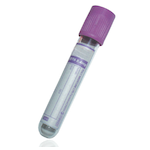Suitable Specimen Types
- Serum
- EDTA Plasma
- Li Hep Plasma
Specimen Transport
First class postSample Processing in Laboratory
Place sample in toxicology rack.Sample Preparation
None requiredTurnaround Time
3 days.Sample Stability
Keep refrigerated. 4 degrees.Tramadol
General Information
Tramadol is a synthetic opiod-receptor agonist that has been used clinically as a narcotic analgesic since 1977. The drug is approximately equipotent with codeine but is considered to cause less respiratory depression and to have much less abuse potential. Daily doses in adults are usually in the range of 100 - 400 mg; the normal release forms may be administered every 4 - 6 hours, while the extended release forms are given every 12 - 24 hours.
Adverse reactions attributed to tramadol therapy include nausea, somnolence, dizziness, headache and constipation. Some of the adverse effects of tramadol, such as agitation, hypertension and seizures may be a result of the drug's ability to block reuptake of biogenic amines. These effects may be exacerbated by concomitant administration of tricyclic antidepressants, SSRIs or monoamine oxygenase inhibitors, resulting in serotonin syndrome. Overdoses of 500 mg and higher may cause agitation, hypertension, tachycardia and seziures while doses greater than 800 mg may cause coma and respiratory depression. Naloxone is only partially effective in reversing tramadol toxicity.
Patient Preparation
No patient preperation required.
Notes
It should be noted that the metabolite (desmethytramadol) is active and has a higher analgesic potency than the parent drug, if you require this measurement please contact the laboratory.
Tramadol measured by HPLC-DAD.
Please note this assay is not currently UKAS accredited
Reference Range
High dose therapeutic use of tramadol associated with concentrations of up to 0.8 mg/L. Toxicity associated with concentrations > 1 mg/L. (Schulz et al. Critical Care 2012, 16:R136).
Specifications
- EQA Scheme?: Yes
- EQA Status: LGC QUARTZ, LGC CLIN TOX
